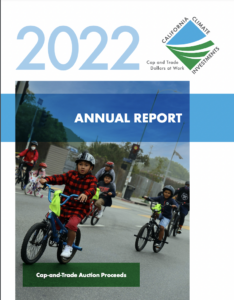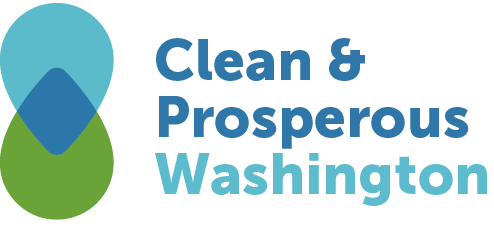Does Cap-and-Invest really work for disadvantaged communities?
At Clean & Prosperous Washington, we bring a data-driven, strategic business approach to moving public- and private-sector climate work forward with urgency. We seek to learn from the real-world experience of others. In that regard, we’re fortunate that California is rigorous in monitoring the impacts of climate policies enacted there.
So when we ask “Can a Cap-and-Invest climate policy benefit disadvantaged communities?” we can look South for the answer.
 This 2022 report from California’s Office of Environmental Health Hazard Assessment regarding Benefits and Impacts of Greenhouse Gas Limits on Disadvantaged Communities shows that yes, the California climate policies that served as models for Washington’s Cap-and-Invest Climate Commitment Act do indeed deliver major, measurable health benefits.
This 2022 report from California’s Office of Environmental Health Hazard Assessment regarding Benefits and Impacts of Greenhouse Gas Limits on Disadvantaged Communities shows that yes, the California climate policies that served as models for Washington’s Cap-and-Invest Climate Commitment Act do indeed deliver major, measurable health benefits.
Among the findings:
- Both heavy-duty vehicles (HDVs) and industrial facilities subject to the Cap-and-Trade Program have reduced emissions of co-pollutants, with HDVs showing a clearer downward trend when compared to stationary sources. These emission reductions have major health benefits, including a reduction in premature pollution-related deaths.
- The greatest beneficiaries of reduced emissions from both HDVs and facilities subject to the Cap-and-Trade Program have been in communities of color and in disadvantaged communities in California, as identified by CalEnviroScreen (CES). The majority (68%) of health benefits from reductions in emissions from facilities subject to the Cap-and-Trade Program have been for people of color. This has reduced the emission gap between communities with high and low CES scores, but a wide gap still remains.
- The transition to zero-emission HDVs will expedite further emissions reductions.
- While the progress observed is encouraging, inequities persist and federal, state, and local climate and air quality programs must do more to reduce emissions of GHGs and co-pollutants in order to reduce the burden of emissions on disadvantaged communities and communities of color.
Paula Sardinas, founder of the Washington Build Back Black Alliance says, “Frontline communities bear the brunt of health effects from industrial pollution. So it’s encouraging to see that the intended health benefits of California’s program are in fact being realized. The environmental justice community in Washington has worked to ensure that our cap and invest program has monitoring and enforcement built in. I expect we’ll see even better numbers than California is reporting.”
 For further reading on how California is putting Cap-and-Trade dollars to work, dive into The 2022 Annual Report to the Legislature on California Climate Investments Using Cap and Trade Auction Proceeds:
For further reading on how California is putting Cap-and-Trade dollars to work, dive into The 2022 Annual Report to the Legislature on California Climate Investments Using Cap and Trade Auction Proceeds:
